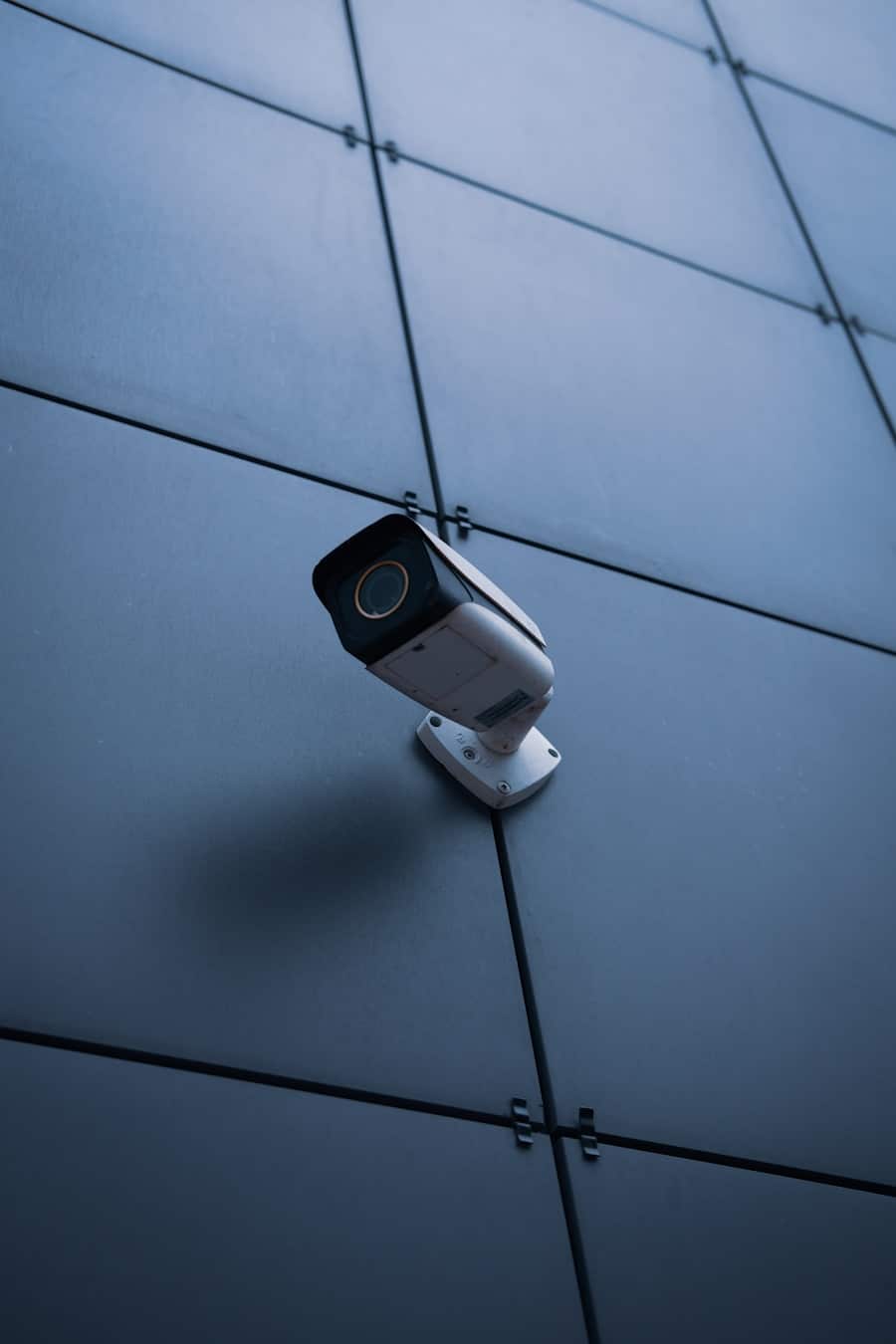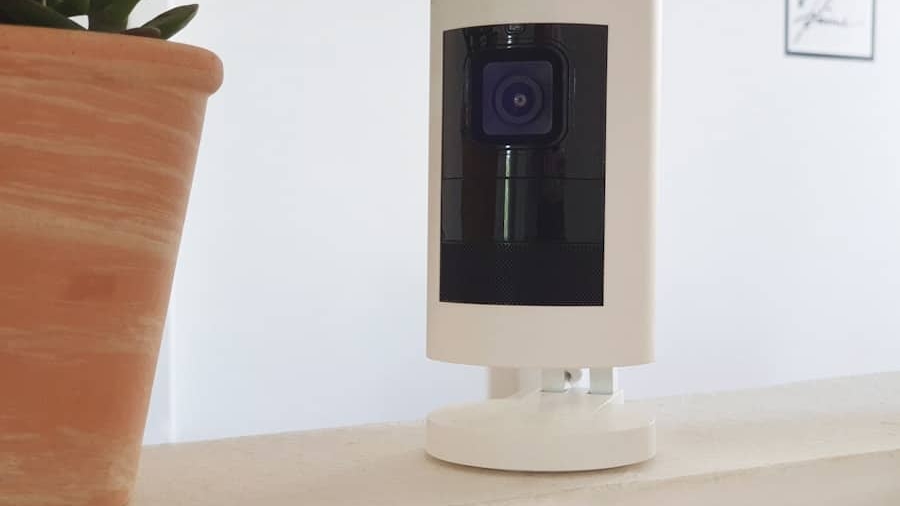The advent of artificial intelligence (AI) has revolutionized numerous sectors, and home security is no exception. As smart home technology continues to evolve, integrating AI into security systems has become increasingly prevalent. Smart home security encompasses a range of devices, including cameras, alarms, and sensors, all designed to protect residences from intrusions and other threats.
The integration of AI into these systems enhances their capabilities, allowing for more sophisticated monitoring and response mechanisms. This transformation not only improves the effectiveness of security measures but also provides homeowners with greater peace of mind. AI-driven smart home security systems leverage machine learning algorithms and data analytics to identify potential threats in real-time.
For instance, a smart camera equipped with AI can learn to recognize familiar faces and differentiate them from strangers, thereby enhancing the accuracy of threat detection. As the technology continues to advance, the potential for AI to reshape the landscape of home security becomes increasingly apparent.
Key Takeaways
- AI plays a crucial role in enhancing smart home security by enabling advanced threat detection and response capabilities.
- Current challenges in threat detection include the limitations of traditional security systems in identifying and responding to complex and evolving threats.
- AI technology has the potential to significantly enhance smart home security by enabling real-time threat detection, analysis, and response.
- Advancements in AI technology, such as machine learning and deep learning algorithms, are enabling more accurate and efficient threat detection in smart home security systems.
- Ethical and privacy considerations are important factors to consider when integrating AI with smart home devices for enhanced threat detection, as they can impact user trust and adoption of AI-powered security systems.
Current Challenges in Threat Detection
False Positives and Alarm Fatigue
This can lead to alarm fatigue among homeowners, who may become desensitized to alerts and fail to respond appropriately when a genuine threat arises. The challenge lies in fine-tuning the algorithms that govern these systems to minimize false alarms while maintaining a high level of sensitivity to actual threats.
The Evolving Tactics of Potential Intruders
Another challenge is the adaptability of potential intruders. As security systems become more sophisticated, so too do the tactics employed by criminals. Intruders may employ various strategies to bypass security measures, such as using disguises or exploiting vulnerabilities in the technology itself.
The Data Overload Conundrum
Moreover, the sheer volume of data generated by smart home devices can overwhelm traditional threat detection systems, making it difficult to discern meaningful patterns from noise. This cat-and-mouse dynamic necessitates continuous updates and improvements to AI algorithms to ensure they remain effective against evolving threats.
The Role of AI in Enhancing Smart Home Security

AI plays a pivotal role in enhancing smart home security by providing advanced analytical capabilities that traditional systems lack. Through machine learning, AI can analyze vast amounts of data from various sources, including cameras, motion sensors, and environmental sensors, to identify unusual patterns that may indicate a security breach. For example, if a motion sensor detects movement at an unusual hour when no one is expected to be home, the AI system can trigger an alert and initiate a response protocol.
Furthermore, AI enhances user experience by enabling personalized security settings tailored to individual preferences and lifestyles. Homeowners can customize their security systems based on their daily routines, allowing the AI to learn when they are typically home or away. This adaptability not only improves the accuracy of threat detection but also ensures that legitimate activities are not misclassified as threats.
Additionally, AI can facilitate remote monitoring through mobile applications, allowing homeowners to receive real-time updates and control their security systems from anywhere in the world.
Advancements in AI Technology for Threat Detection
Recent advancements in AI technology have significantly improved threat detection capabilities within smart home security systems. One notable development is the use of deep learning algorithms, which enable systems to process and analyze complex data sets more effectively than traditional machine learning methods. Deep learning models can recognize intricate patterns in video feeds, allowing for more accurate identification of suspicious behavior or potential intruders.
Another significant advancement is the integration of computer vision technology into smart cameras. These cameras can now utilize facial recognition algorithms to identify individuals and assess their behavior in real-time. For instance, if a camera recognizes a known family member approaching the front door, it can disregard the motion as non-threatening.
Conversely, if an unfamiliar face is detected loitering near the property, the system can alert homeowners or law enforcement immediately. This level of sophistication not only enhances security but also provides users with valuable insights into their home environment.
Ethical and Privacy Considerations in AI-Powered Security Systems
As AI technology becomes more integrated into smart home security systems, ethical and privacy considerations come to the forefront. The use of surveillance cameras equipped with facial recognition raises concerns about individual privacy rights and the potential for misuse of data. Homeowners must navigate the delicate balance between enhancing security and respecting the privacy of individuals within and around their homes.
The collection and storage of video footage and personal data necessitate robust data protection measures to prevent unauthorized access or breaches. Moreover, there is an ongoing debate regarding consent and transparency in AI-powered security systems. Homeowners should be informed about how their data is collected, used, and shared with third parties.
Clear communication about privacy policies and user agreements is essential to build trust between consumers and technology providers. Additionally, ethical considerations extend to algorithmic bias; if AI systems are trained on biased data sets, they may inadvertently perpetuate discrimination or unfair treatment of certain individuals or groups.
Integration of AI with Smart Home Devices for Enhanced Threat Detection

The integration of AI with various smart home devices creates a cohesive ecosystem that enhances overall threat detection capabilities. For instance, smart doorbells equipped with AI can analyze video feeds to identify visitors and alert homeowners when an unknown individual approaches their property. This functionality not only improves security but also allows homeowners to interact with visitors remotely through two-way audio features.
Moreover, AI can facilitate communication between different smart devices within a home network. For example, if a motion sensor detects movement outside while a homeowner is away, it can trigger the smart camera to start recording and send an alert to the homeowner’s smartphone. This interconnectedness ensures that all devices work in harmony to provide comprehensive security coverage.
Additionally, AI can analyze data from multiple sources to identify trends or anomalies that may indicate a potential threat, allowing for proactive measures to be taken before an incident occurs.
Future Trends and Predictions for AI in Smart Home Security
Looking ahead, several trends are likely to shape the future of AI in smart home security. One prominent trend is the increasing adoption of edge computing technology, which allows data processing to occur closer to the source rather than relying solely on cloud-based solutions. This shift can enhance response times and reduce latency in threat detection, enabling real-time analysis without delays associated with data transmission over the internet.
Another trend is the growing emphasis on user-centric design in smart home security systems. As consumers become more aware of privacy concerns and seek greater control over their data, manufacturers will likely prioritize transparency and user empowerment in their products. This may include features that allow users to customize privacy settings or opt-out of certain data collection practices.
Additionally, advancements in natural language processing (NLP) will enable more intuitive interactions between homeowners and their security systems. Voice-activated controls could become standard features, allowing users to manage their security settings through simple voice commands. This evolution will not only enhance user experience but also make smart home security more accessible to individuals who may not be tech-savvy.
The Impact of AI on the Future of Home Security Industry
The integration of AI into smart home security systems is poised to have a profound impact on the future of the home security industry as a whole. As consumers increasingly demand advanced security solutions that offer both convenience and effectiveness, companies will need to innovate continuously to stay competitive in this rapidly evolving market.
Moreover, as AI technology matures, we may see a shift towards subscription-based models for smart home security services. Companies could offer tiered plans that provide varying levels of AI-driven monitoring and response capabilities, allowing consumers to choose solutions that best fit their needs and budgets. This shift could democratize access to advanced security technologies, making them available to a broader audience.
In conclusion, as artificial intelligence continues to advance and integrate into smart home security systems, it will reshape how we approach safety in our homes. The challenges associated with threat detection will drive innovation in AI technologies while ethical considerations will necessitate responsible practices within the industry. Ultimately, the impact of AI on home security will lead to more effective solutions that enhance safety while respecting individual privacy rights.
In a related article discussing the advancements in technology, particularly in the realm of smart devices, a review of the Xiaomi smartwatches can provide valuable insights into the future of wearable technology. The article highlights the features and capabilities of these smartwatches, showcasing how they can enhance the overall smart home security system. To learn more about the potential impact of smartwatches on home security, check out the Xiaomi smartwatches review.
FAQs
What is AI in smart home security threat detection?
AI in smart home security threat detection refers to the use of artificial intelligence technology to identify and respond to potential security threats in a smart home environment. This can include the use of machine learning algorithms to analyze patterns and detect anomalies that may indicate a security breach.
How does AI help in smart home security threat detection?
AI helps in smart home security threat detection by continuously monitoring and analyzing data from various sensors and devices in the home. It can identify unusual patterns or behaviors that may indicate a security threat, such as unauthorized access or unusual activity.
What are the benefits of using AI in smart home security threat detection?
Some benefits of using AI in smart home security threat detection include improved accuracy in identifying potential threats, faster response times to security incidents, and the ability to adapt and learn from new threats over time. AI can also help reduce false alarms and improve overall security in the home.
What are the potential challenges of using AI in smart home security threat detection?
Challenges of using AI in smart home security threat detection may include privacy concerns related to the collection and analysis of personal data, the potential for false positives or false negatives in threat detection, and the need for ongoing maintenance and updates to AI algorithms to keep up with evolving security threats.
How is AI expected to evolve in smart home security threat detection in the future?
In the future, AI in smart home security threat detection is expected to become more sophisticated and capable of handling a wider range of security threats. This may include the integration of AI with other emerging technologies such as IoT devices, biometric authentication, and advanced video analytics for enhanced security capabilities.

